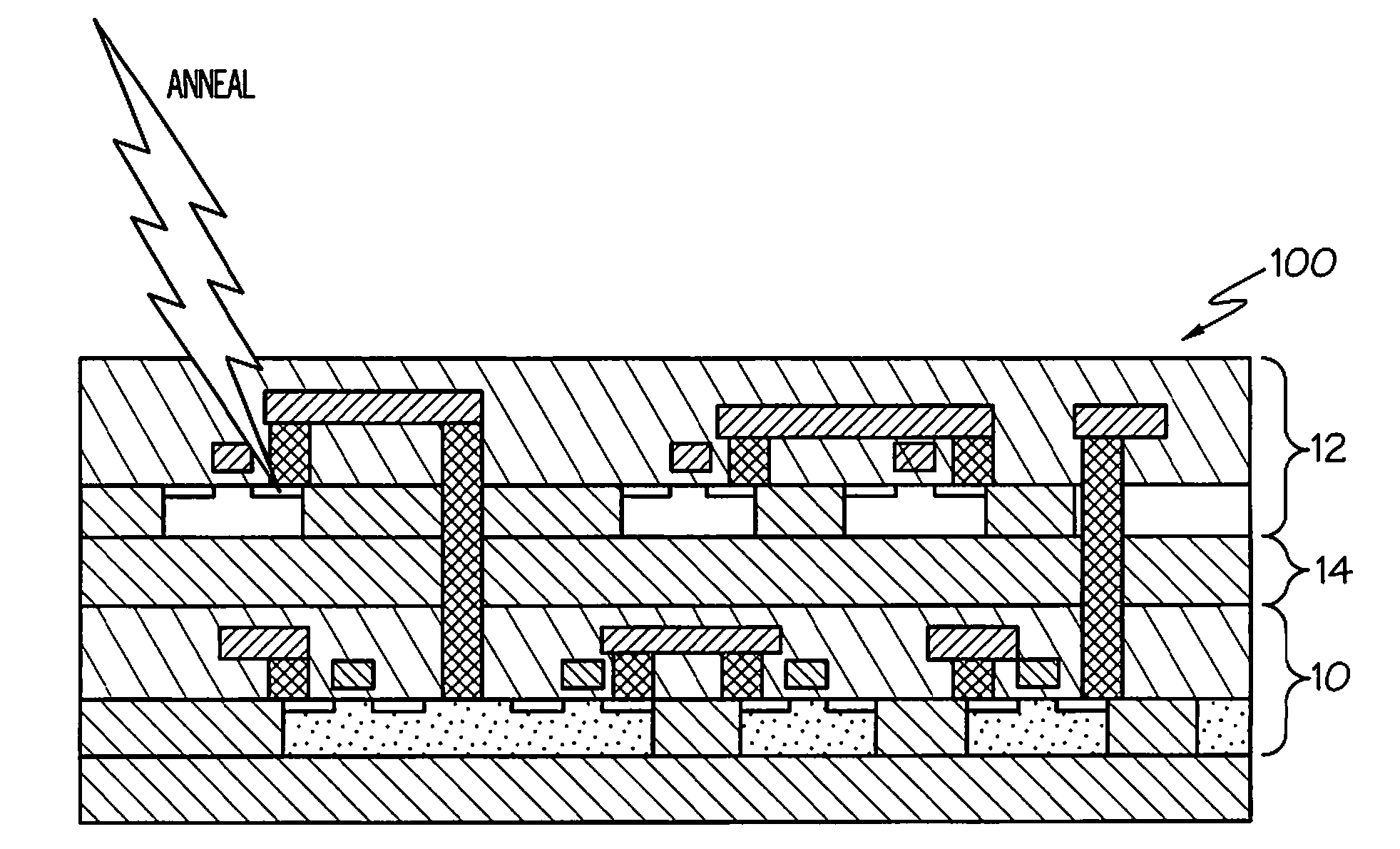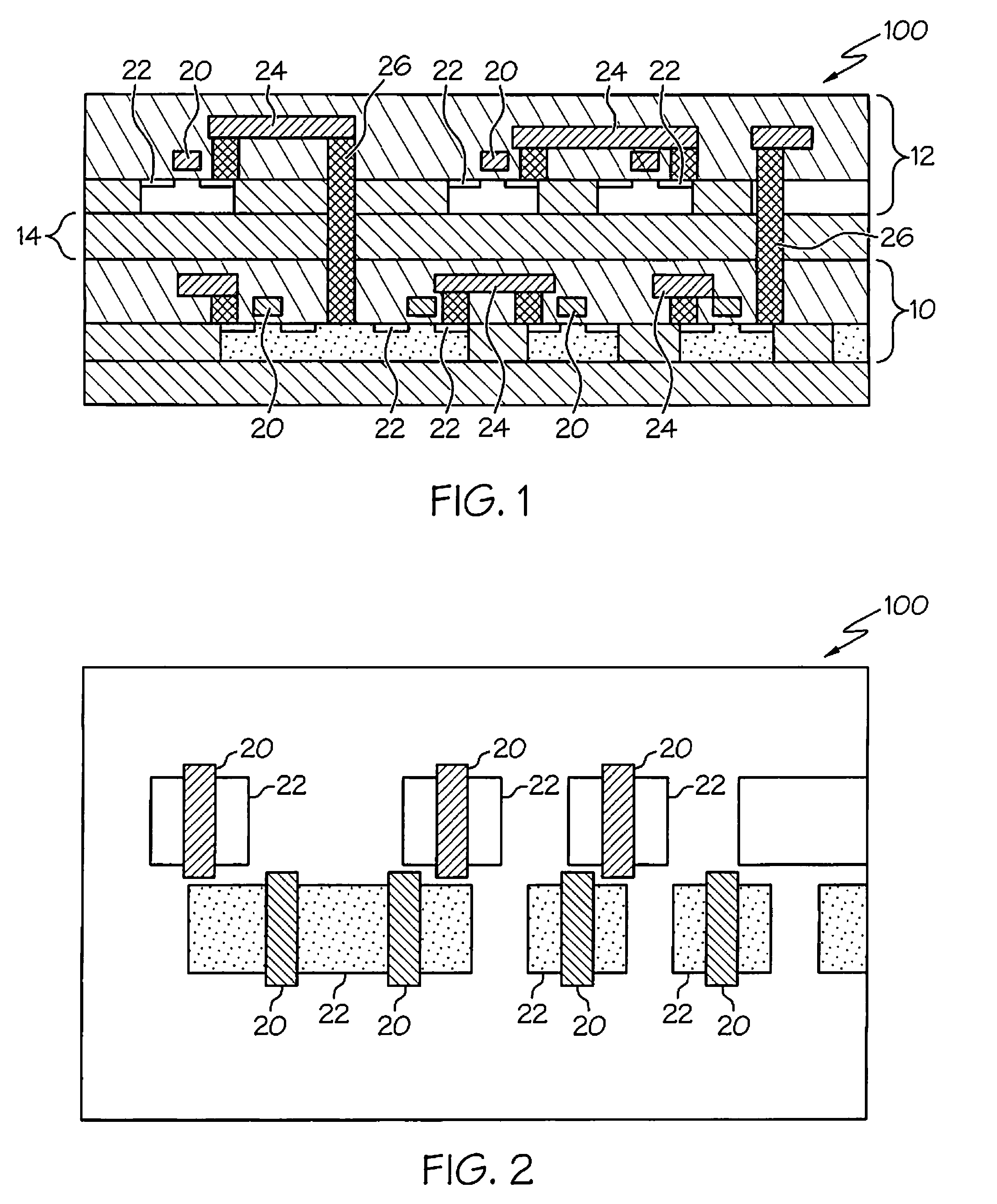Laser annealing for 3-D chip integration
a technology of laser annealing and 3-d chip, applied in the direction of semiconductor devices, irradiation devices, electric discharge tubes, etc., can solve the problems of fundamental physical limitations, the inability of manufactures to reduce the size of features, and the inability to maintain a proper alignment between separate dies
- Summary
- Abstract
- Description
- Claims
- Application Information
AI Technical Summary
Benefits of technology
Problems solved by technology
Method used
Image
Examples
Embodiment Construction
[0024]Referring to FIGS. 1 and 2, a stacked semiconductor structure 100 is illustrated. Although not limited to this specific configuration, the stacked semiconductor structure 100 includes at least two separate stacked layers 10, 12 of active devices (e.g., transistors). Each stacked layer 10, 12 includes a semiconductor material (e.g., silicon, germanium silicon, gallium arsenide) in which semiconductor features such as gates 20, active regions (e.g., source / drain regions 22), and interconnects 24 are formed. Each stacked layer 10, 12 may also include active devices (e.g., transistors) and passive devices (e.g., capacitors, inductors, and resistors) as well as well as other features found in a semiconductor device (e.g., interconnects, doped polysilicon lines, and metal silicide lines). To connect one layer 10 to another layer 12, vias 26 may also be included. An insulation layer 14 (e.g., SiO2) may also be positioned between each stacked layer 10, 12.
[0025]Referring to FIG. 2, th...
PUM
 Login to View More
Login to View More Abstract
Description
Claims
Application Information
 Login to View More
Login to View More - R&D
- Intellectual Property
- Life Sciences
- Materials
- Tech Scout
- Unparalleled Data Quality
- Higher Quality Content
- 60% Fewer Hallucinations
Browse by: Latest US Patents, China's latest patents, Technical Efficacy Thesaurus, Application Domain, Technology Topic, Popular Technical Reports.
© 2025 PatSnap. All rights reserved.Legal|Privacy policy|Modern Slavery Act Transparency Statement|Sitemap|About US| Contact US: help@patsnap.com



